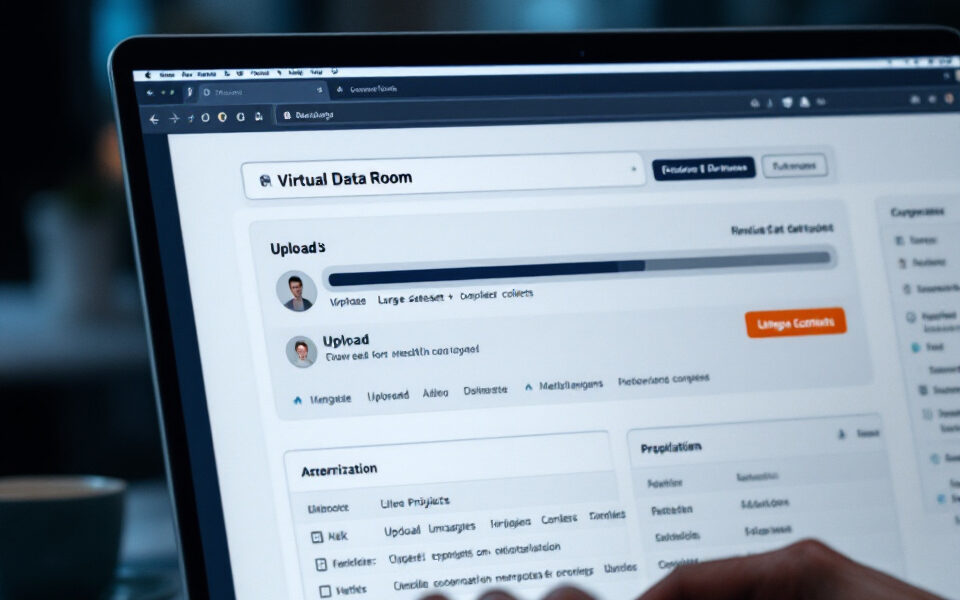
In the course of enterprise operations, documents serve as critical data assets, and the efficiency and security of their management directly impact an enterprise’s development. As enterprise scale expands and business processes complicate, traditional document management systems have gradually exposed numerous issues, such as low file retrieval efficiency, weak security protection, and cumbersome collaboration workflows. Virtual Data Rooms (VDRs), with their intelligent management solutions, offer entirely new ideas and effective approaches for upgrading document management systems.
The Pain Points and Dilemmas of Traditional Document Management Systems
Traditional document management systems face a series of pressing challenges. First, in terms of file storage and retrieval, massive files are stored in a disordered manner, lacking unified classification and indexing. This makes it akin to “searching for a needle in a haystack” when employees look for files, consuming enormous time and energy. Second, security protection is insufficient: traditional systems have coarse-grained permission settings, making it difficult to implement fine-grained management of sensitive files and increasing the risk of data breaches. Furthermore, team collaboration efficiency is low: when multiple people collaborate on document editing, issues such as version confusion and information asynchrony frequently occur, severely affecting work progress.
Intelligent Classification and Retrieval: Efficient File Location
The intelligent management solutions of VDRs can systematically address the above issues, enabling a comprehensive upgrade of document management systems. In terms of intelligent classification and retrieval, VDRs leverage artificial intelligence and machine learning technologies to automatically identify file contents, conducting precise classification and labeling based on multi-dimensional information such as file type, keywords, and business processes. For example, Lenovo Filez’s VDR can quickly categorize different file types—such as contracts, reports, and blueprints—into corresponding folders and add tags like project name, creation time, and responsible person. When retrieving files, employees can obtain the required documents in an instant by inputting keywords or filtering specific tags, with retrieval efficiency improved by several times.
Data Security Protection: Building a Solid Security Line
Data security management is a key manifestation of VDR intelligence. The system not only employs advanced encryption technologies, such as the AES-256 encryption algorithm, to ensure data security during transmission and storage but also uses AI technology to monitor and analyze data access behaviors in real time. Once abnormal operations are detected—such as frequent downloads of sensitive files outside working hours or access from unfamiliar IP addresses—the system immediately issues a warning and automatically takes measures like restricting access or freezing accounts to effectively prevent data leaks. Additionally, VDRs support fine-grained permission management, allowing enterprises to assign different levels of access, editing, and downloading permissions to users based on their positions, responsibilities, and project needs, ensuring that sensitive information is only accessible to authorized personnel.
Efficient Team Collaboration: Real-Time Collaborative Editing
VDRs also demonstrate powerful intelligent advantages in team collaboration. The multi-person online collaborative editing function allows team members to jointly edit the same document in real time. The system automatically saves every modification record, enabling users to trace historical versions at any time and avoid version conflicts. Meanwhile, with instant messaging and commenting functions, team members can communicate ideas and propose modification suggestions in real time during document editing, making collaboration more efficient and smooth. For example, during the planning phase of a large-scale project, members from multiple departments—such as marketing, technology, and operations—can jointly draft the planning scheme through a VDR, communicate in real time, and reach consensus quickly, significantly shortening project preparation time.
Intelligent Analysis and Decision Support: Data-Driven Management
Furthermore, VDRs possess functions for intelligent analysis and decision support. By analyzing behavioral data such as document creation, access, and modification, the system can generate visual reports to help enterprise managers understand file usage, employee work efficiency, project progress, and other information, providing data support for enterprise decision-making. For instance, if analysis reveals that a certain type of file has a high access frequency but low editing efficiency, the enterprise can optimize business processes or provide targeted training accordingly to enhance overall operational efficiency.
Embracing Upgrades, Marching Toward a New Journey
The intelligent management solutions of VDRs offer an ideal upgrade path for enterprise document management systems. From intelligent classification and retrieval to security protection, from efficient collaboration to intelligent decision support, VDRs comprehensively enhance the efficiency and security of document management. In the context of digital transformation, enterprises should actively introduce VDRs to promote the upgrade of document management systems, laying a solid data foundation for sustained development.
bestCoffer AI Redaction: Securely Share Your Confidential Files
Get in touch with bestCoffer to find out how we can support your business.